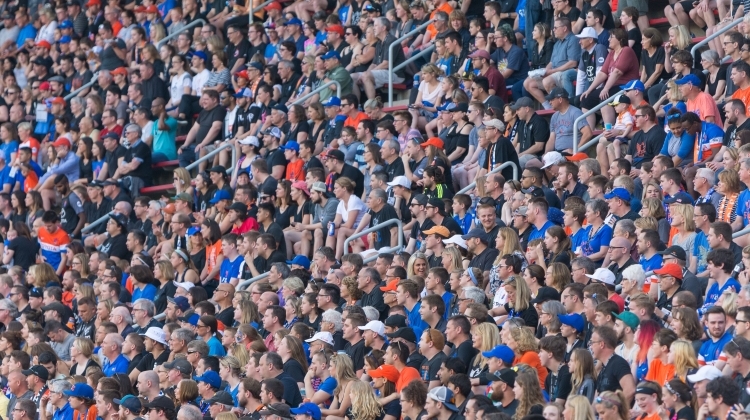
The dream came true for FC Cincinnati supporters. Cincinnati has another top-level franchise with FCC’s admittance into Major League Soccer. However, with any expansion sports franchise, things will change, especially when leaving a minor league for a major one.
Here are five things FCC supporters should be prepared for when the team enters MLS in 2019.
Higher Prices
Before someone shouts Captain Obvious, there are far too many fans out there that have grown used to the affordability of FCC soccer. Prices are going to rise, and they are going to rise in a way that is uncomfortable for some supporters. For example, general admission seats for FCC games run for $10 right now. Go two hours up the road to Columbus, and general admission seats sell for around $27. That’s just one example.
Also, merchandise prices will go up as well. Authentic FCC jerseys currently sit at $95 with another $20 to customize it. Again using the Columbus Crew SC example, their authentic jerseys cost $149 with a name. Fans with limited income have a tough decision to make: buy merchandise now when it’s cheaper, or pay much more money for almost the same items to support the team when it joins MLS. It’s not an easy decision.
Awkward Scheduling
Being a “Eurosnob” means being used to things like balanced scheduling. American soccer generally does the opposite, as FC Cincinnati supporters have learned with the USL. However, MLS is even more confusing, because they continually tinker with scheduling.
It’s easy in Europe and in much of the world overall. Teams play each other twice a year. Going back to FCC’s neighbor to the north, Columbus will play the Chicago Fire and Philadelphia Union three times this year. Yet Crew SC face Trillium Cup rival Toronto FC only twice. They will face Western Conference teams like the LA Galaxy and LAFC once. The scheduling is awkward and will only get more awkward as more teams enter the league.
Overall, what that means is when teams from an opposing conference pop up on the FCC home schedule, jump on tickets for that game. It could be quite a long time before that team visits the Queen City again.
First-Year Expectations
There isn’t a set tradition in MLS when it comes to first-year expectations. It really depends on the finances at the club’s disposal and its long-term strategy. The Seattle Sounders came in and knocked it out of the park in their first season. Atlanta United FC spent a ton of cash and performed even better. Each franchise has taken its own path, and it’s never a given that a team will be horrible in its first year.
FCC ownership is quite wealthy, but it doesn’t have the same pool of resources that LAFC or Atlanta United FC have. The odds are good that FCC will work from the ground up to develop a solid youth system that feeds into the main club instead of relying on high-priced designated players. If that’s the strategy FCC follows, the club can develop into a perennial contender, but it has to be done with patience and smart planning. Simply understand that it likely will not happen in Year 1.
Market Disparity
Don’t be fooled. There is market disparity in MLS. Teams like the Los Angeles Galaxy, New York Red Bulls and NYCFC have taken advantage of their markets to spend large amounts of money on designated players. However, only one of those above teams has won an MLS Cup (Galaxy).
Still, the big markets still draw big players, like Manchester City and the New York Yankees in relation to NYCFC. That’s not going to happen in Cincinnati. The Queen City is a wonderful place to live, but it will never draw European stars like New York and Los Angeles will. It will also likely never attract a massive investor, who can pour money into those stars either. FCC is a franchise that will have to learn from clubs based in similar markets to thrive in the future.
Opportunity for Success
One advantage the MLS franchise system has over the traditional European model is that a team can turn its fortunes around quickly. World powers like Real Madrid, FC Barcelona, Manchester United and Bayern Munich have large financial advantages over clubs like Real Betis and Everton. The odds are high that those smaller clubs will never reach the top of the European ladder.
MLS doesn’t have that problem. It’s not a requirement to keep up with the L.A. Galaxy to win. Since 2008, six of 10 MLS Cup winners have come from small to medium-sized markets, including the Portland Timbers and Crew SC. Only the Galaxy have managed to win back-to-back titles. There is hope that FCC will become a successful franchise. It isn’t bound to the fate of similar sized markets overseas. Parity changes things in American sports. Even the richest teams in MLS struggle to fight against it.
Overall, these five factors weave together to show a league full of opportunity. A key point to understand surrounds the world market, which is why it is a theme here. FC Cincinnati will be successful if it learns to navigate the weird schedule, avoids getting bogged down trying to make or spend money, and refuses to accept the idea that market size matters.
@dciapala for @CincySoccerTalk












